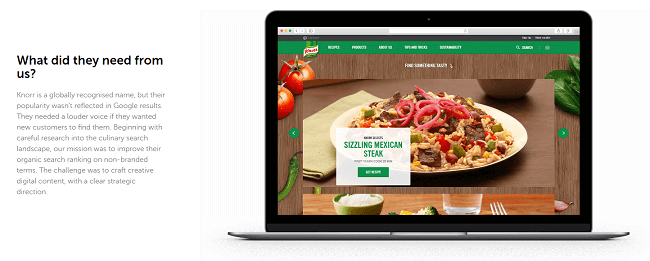What Types of Content Generate Demand in eCommerce?
eCommerce and content go hand-in-hand like the best of friends. If you want to do well in eCommerce, you better have a content marketing strategy in place that drives awareness of your brand’s products or services.
In other words, a content strategy that generates demand for what you offer.
The problem comes when you consider just how many different content types there are, the fact that too many businesses stick with a few they feel comfortable with, and that people have varying tastes that translate to liking one type over another.
For example, just because Nicole likes blog posts doesn’t mean that Tom will, or vice versa with Tom liking videos.
An easy solution comes in the form of a strategy that generates demand by covering many different content types to appease as many people as possible; a strategy that includes the following 10 content types.
1. Blog Posts
A staple of any eCommerce content strategy, blog posts are central to demand generation and marketing as a whole because they can literally be about anything, including how wonderful your new product is and why your users need it.
Even better, not only can blog posts be used by any business in any industry to foster brand loyalty amongst their readers and increase demand for their products/services, but they’re also excellent for improving SEO and driving traffic to your store.
Tip: Always include CTAs and keywords in your blog posts.
2. Images
Images, whether photos or designs, are a perfect type of demand generation content for an eCommerce website because they allow brands to show off their products in all their glory.
This is especially true for brands in fashion and other highly aesthetic industries that rely on visuals to entice their users to make the purchase.
Tip: Always use high definition images that display the product from all angles.
3. Infographics
Even though they’re technically images, infographics are great for demand generation for a different reason. Whereas standard images work so well because they portray your products in a positive light, infographics pack a lot of information into a visual representation that allows you to educate your audiences in whatever you want.
For example, instead of giving them a post on the latest fashion trends, which conveniently feature some of the products you sell, you can present an infographic with said products and how to match them to create different outfits.
Tip: Keep designs clean and don’t overwhelm your users with too much information.
4. Videos
There’s a reason eCommerce video marketing is one of the most powerful forms of content: it’s immersive, engaging and much easier to consume than reading a lengthy blog post.
For example, you can post a demonstration to get your audience ready for a new product that’s on its way, a how-to or tutorial video to teach them how to use it, or even customer reviews to give them the reassurance they need to convert.
Tip: Like blog posts, always include a CTA in your videos for the highest impact.
5. Ratings, Reviews and Testimonials
What do reviews, ratings and testimonials have in common? When positive, they’re all excellent sources of demand generation that function as proofs that you’re selling something worthwhile.
This is because the people leaving these proofs aren’t regular people, they’re people just like you who were, at one point, in your exact situation.
After all, who better to trust than yourself?
Tip: If you want positive ratings, reviews and testimonials, you have to offer positive experiences to your users — it’s as simple as that.
6. Emails and Newsletters
“Email has an ability many channels don’t: creating valuable, personal touches – at scale.” – David Newman
Email marketing is a tried and true way of consistently and effectively reaching your audience with information about your brand and its products to increase their demand.
For example, you can include tailored offers based on their browsing and purchasing habits with items they’re actually interested in, as opposed to the ones you’re trying to push.
Additionally, weekly or monthly newsletters can keep your audience apprised of any new developments they can expect, which works to build anticipation for the day they’re released.
Tip: Always include CTAs in your emails and personalise them with more than just your recipient’s name.
7. White Papers
White papers are a type of long-form content that’s typically informationally dense and covers a specific something in great detail. For example, a new product that’s coming out and why its features make it the best in the market.
Even though they’re more prevalent in the B2B market, bigger B2C brands commonly release white papers to position themselves as authority figures within their industry, which functions as a lead magnet.
Tip: Always focus on a specific problem and offer solutions for said problem (e.g. your products or services)
8. Announcements
Announcements are perfect eCommerce marketing ideas for demand generation because they’re precursors of what’s to come that hype your audience up.
Whether you want to talk about a new product, or about how you’ve improved something established, announcements are the perfect medium to do so.
Tip: Don’t just make one announcement; make a couple leading up to the main one to build up expectations.
9. Case Studies

In the world of marketing, case studies are in-depth examinations with real-life examples that allow brands to showcase how they were able to help their users.
Keep in mind that case studies are used primarily to showcase services as opposed to specific products. For example, take a look at this case study from Appnova showcasing their SEO services.
Tip: Don’t just report results. Instead, explain the problem and how your brand provided a solution that led to the results.
10. Interviews
With some strategic thinking about the topics being covered, interviews, especially those with influencers promoting your brand, are excellent for generating demand for your brand and its products.
This is because interviews give you the opportunity to go behind the scenes and show your audience the inner workings of your brand, which promotes loyalty by making them feel like they’re “part of the family.”
Tip: Don’t post an interview if it doesn’t provide value to your audience.
Final Thoughts
A lot of eCommerce brands make the mistake of sticking to one, two or three main content types in their demand generation strategies.
For example, they may think that blogging is the best eCommerce content type, so they push post after post in a cycle that may include an image or video here or there, but never truly strays from a dependency on blogs.
Instead, they need to diversify and create a demand generation strategy that encompasses many content types because, at the end of the day, everyone is different and will react to the same content differently.
As Anna Handley put it, “[e]ven when you are marketing to your entire audience or customer base, you are still simply speaking to a single human at any given time,” so why would you act as if everyone is uniform in their preferences?
Subscribe To Us
Our Services
Categories
Subscribe To Us
Contributors
Categories

This website uses cookies so that we can provide you with the best user experience possible. Cookie information is stored in your browser and performs functions such as recognising you when you return to our website and helping our team to understand which sections of the website you find most interesting and useful. Third party cookies such as Google Analytics is also used on this site to provide analytics in order to better understand the user engagement on our site.
You can adjust all of your cookie settings by navigating the tabs on the left hand side.
Strictly Necessary Cookie should be enabled at all times so that we can save your preferences for cookie settings.
If you disable this cookie, we will not be able to save your preferences. This means that every time you visit this website you will need to enable or disable cookies again.







0.Comments